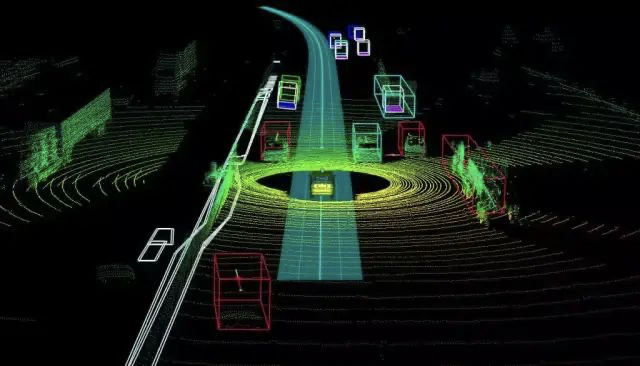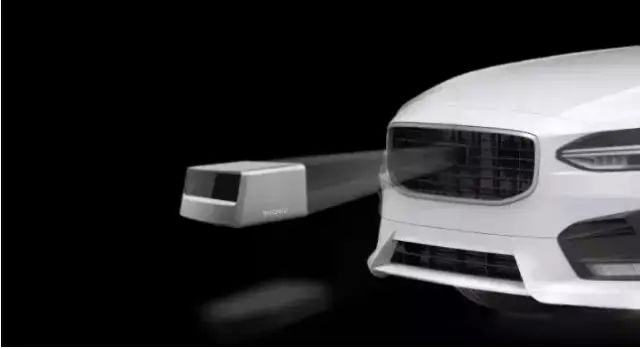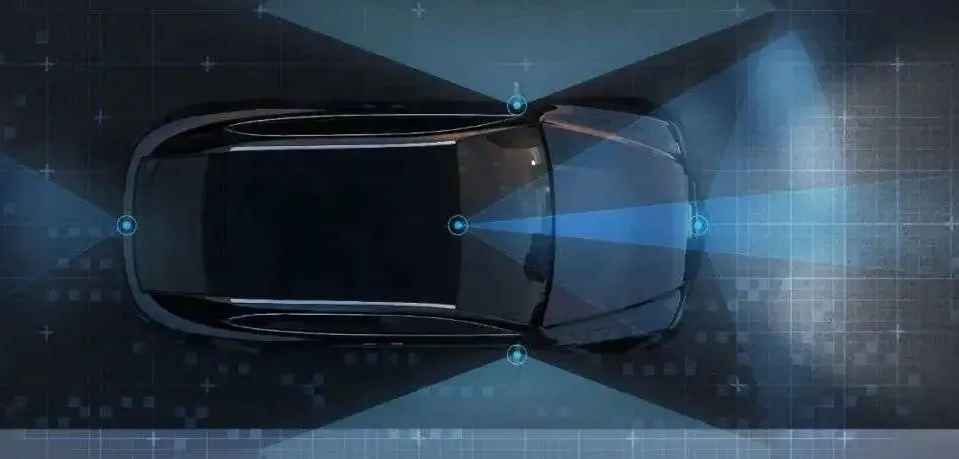EUbotek: Aiming to Become the “True Mass Production” Laser Radar System Supplier in the Direction of Tier 1
Authored by Zheng Wen, Edited by Zhou Changxian
Ju Xueming, who was responsible for the development of environmental perception for the advanced autonomous driving project at BMW Research Institute in Germany, returned to China at the end of 2015 and founded EUbotek, which became the only technology partner for laser radar supplier Ibeo in China, the predecessor of Liangdao Intelligence.
From 2017 to 2020, Liangdao Intelligence basically established a testing and validation system. This year, the company has made a more clear role positioning to become a “true mass production” laser radar system supplier in the direction of Tier 1.
Behind Ju Xueming is a team that “understands laser radar mass production” and has participated in the global mass production of the first laser radar in the Audi A8 model.
On April 13th, Liangdao Intelligence and international laser radar company Innoviz announced a strategic partnership. Taking this opportunity, AutocarMax and executives of the two companies had a conversation.
We believe that as pioneers and eyewitnesses, their industry sense is very sensitive, and the analysis and judgments they have made are also very objective.
Why is mass production the key?
In 2021, new car models from brands including SAIC, GAC, Great Wall, Geely, and Ideal will successively be equipped with laser radar. New cars expected to hit the market in 2022 include the XPeng P5, NIO ET7, and IM L7.
On the other end of the market, laser radar suppliers such as Velodyne, Luminar, and Innoviz have also entered the public view. Thus, a voice began to rise, believing that the first year of mass production for laser radar has arrived.
Regarding this view, the general manager of Innoviz China, Su Shuping, does not agree. “I think that at least an annual output of more than 500,000 laser radars is considered large scale, and it cannot be said that 1,000 laser radars mounted on cars can be called large scale. Therefore, I think that this time period is still after 2024 to 2025.”
Ju Xueming stated, “I believe that global leading car companies have done a lot of work on the development of laser radar functions, but in terms of application, they have set very conservative scenario limits. This is the awe of traditional manufacturers for safety. In the future, based on different types of laser radar and their combination, I think more scenarios will gradually be opened up, but this requires long-term accumulation.”
At the just-concluded 2022 China Electric Vehicle 100 People Forum, Li Yifan, co-founder and CEO of Hesai Technology, also mentioned the same time node. He believes that this year is the first time for a relatively large-scale mass delivery, at a scale of 100,000 units, and the real outbreak should be in the millions of units, which is around 2025.In fact, LiDAR is still an immature industry today. Regardless of size, no company has successfully mass-produced LiDAR products that meet performance and reliability requirements in accordance with automotive standards. Hesai Technology also emphasizes the importance of “guaranteeing large-scale high-quality” production.
Putting LiDAR in a car requires a series of steps, including function definition, system design, software development, testing and verification, and system integration. And each step has many details that need to be honed.
Juxueming said that from the perspective of the product testing and verification cycle, the landing speed is not optimistic. Overly rushing will make it difficult to guarantee the integrity of LiDAR functions. “True mass production is piled up by details. Although there are no insurmountable obstacles for LiDAR to be used in cars at present, there are many details and trivial problems from perception development to testing.”
It should be noted that from the cooperation between Valeo and Audi in 2010 to the mass production of Valeo SCALA in 2018, it took a full eight years for the first generation of automotive-level LiDAR to be used in cars and it is still the only product in the world that has passed automotive standards and achieved front-loading mass production.
Therefore, there is no doubt that mass production is the top priority of the LiDAR industry at present.
The next question is how to reduce costs.
First of all, it starts with system design, material selection, and structural optimization. When production volume increases, it will move towards chipization, which is also a major driving factor for reducing the cost of LiDAR in the future.
If the traditional discrete architecture of LiDAR can be replaced with advanced semiconductor processes, it means that LiDAR that enters the Moore’s Law track is expected to achieve significant increase in energy and cost reduction. This is the chipization of LiDAR.
Previously, Li Yifan explained that chipization technology is not a single technology, but a series of technologies. It mainly solves several major problems:
-
Integrating hundreds of discrete components in the original traditional architecture into a few small chips through semiconductor processes, including laser emission, laser reception, driving, signal processing, and even algorithms.
-
In terms of assembly process, the independent systems that used to be installed in a LiDAR required a lot of manual debugging. After realizing chipization, the assembly process becomes relatively simple and can be automated.
-
Performance and reliability will also be better.
How to choose a technical route and partners?
In Juxueming’s view, after LiDAR truly achieves mass production in the future, the world cannot accommodate hundreds of LiDAR startups, and they will definitely gather towards the top, but there will not be an oligopoly, or only two or three companies.
“I think there will be more players than this, and there may even be more than ten. This is because the current market for LiDAR technology is in a stage of diversified choices in technical paths, and there is no situation where one technology path absolutely dominates the others. In other words, different technical paths can coexist. Also, due to different technical paths and different application scenarios, LiDAR companies do not have purely competitive relationships with each other.
According to the ranging principle, LiDAR can be divided into mechanical, hybrid solid-state, and solid-state types, which can be further subdivided. Although in overall thinking, solid-state LiDAR is the future and hybrid solid-state technology route is the present, and most of the LiDAR products that have announced mass production being used are also hybrid solid-state, it is difficult to accurately distinguish the advantages of more precise technical routes.
“We have tested a large number of LiDAR products with different technical routes, but I don’t think there is one route that is better than the others so far,” said Ju Xueming bluntly.
In his team’s view, some technical paths have a very high ceiling but are not mature enough yet, and may still occupy a certain market space in the future.
LiDARs with different technical routes have their own advantages and disadvantages, and need to be comprehensively matched. Some technical routes are suitable for medium to long-range and even ultra-long-range, while others are biased towards medium-short and even short distances. From the perspective of different functional requirements for autonomous driving in the future, there are application spaces for all.
“From our understanding, Flash may have better landing space for some medium-distance and short-distance applications in its current state, but forward-looking high-resolution, cost-effective products based on MEMS are currently more suitable for the forward direction, and this is a combined relationship.”
“In our solution, we will also combine A+B, and even in the future A+B+C. We believe that the needs of different OEMs may deduce the most reasonable solution, which may use different technical routes for forward, medium-to-long distance or short distance.”
In fact, there are very few LiDAR companies that adopt exactly the same technology in the market. Everyone will choose different technical paths based on their own capabilities and understanding of the market.
Su Shuping revealed that Innoviz has bet on MEMS mirror in its technical path, and its performance will be better, smaller in size, and lower in power consumption, but it will be weaker in stability and lifespan.
In addition to the technical path selection, there is also data security, as well as the localization issues derived from it.
As we all know, for the purpose of protecting the privacy of citizens, national data security or law enforcement convenience, many countries have adopted data localization measures, and even evolved into the harshest case of “prohibiting data from leaving the country.”
Entering the digital age, data is an important asset, and LiDAR also involves data. “According to Ju Xueming, laser radar data is high-precision data related to surveying and mapping, so these laws and regulations actually require localized testing. That is to say, it must be completed by a localized enterprise with data collection qualifications.

To some extent, this is the starting point for the cooperation between InnoVision and Innoviz. The main cooperation between the two parties is data services and the process of laser radar system from R&D to testing.
In addition, there is another important reason for the cooperation between the two parties.
The application of laser radar for automakers is still in the early stage, and the requirements for laser radar application and product performance are constantly being adjusted, making it not a fixed product. Therefore, for international laser radar manufacturers, in order to meet the requirements of domestic customers, a strong and adaptive R&D team must be in place to meet their needs.
“This is not just a problem with Innoviz, but a challenge facing all foreign laser radar manufacturers.” Su Shuping believes that in this regard, domestic laser radar companies have some innate advantages.
“The goal is still to develop the best system possible. Currently, everyone’s things add up to an incomplete system, and there is no limit in terms of functionality, nor is there 100% safety,” says Ju Xueming, who is more pragmatic. He believes that the key now is to work together to build the system.
This may create better opportunities for local laser radar system suppliers in the relevant field.
So, will similar domestic and foreign cooperation be exclusive?
“Cooperation is always open, and I think Innoviz is the same, because this market is large enough and requires a lot of effort from everyone,” said Ju Xueming. “We had a very good cooperation with Ibeo before, and now our cooperation with Innoviz is not conflictual. The roles we play with different customers might be different.”

He believes that the demands of OEMs are different, and there are also differences in function development. For Liangdao Intelligence, which is positioned as a Tier 1, the priority is to provide customers with the best hardware combination based on their needs.
In fact, not only Liangdao Intelligence, but also other companies that want to enter this field in the future should follow similar cooperation principles.
During the interview, Ju Xueming said something that touched me.
He said, “Roles like Faurecia and Magna do not exist in China on a global level. This is an opportunity for Liangdao.”
This article is a translation by ChatGPT of a Chinese report from 42HOW. If you have any questions about it, please email bd@42how.com.
